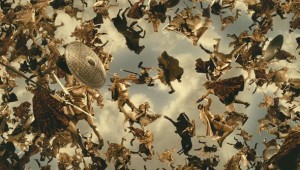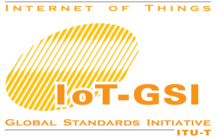In Greek Mythology, the Hekatonkheires were children of Gaia (Earth) and Uranus (sky). They were three incredibly strong giants, each had 100 hands and 50 heads, and their ferocity surpassed that of all the Titans.
In today's information universe, at least in this version of the story, they are reincarnated and will have the option of doing good, defeating evil and helping the planet to become a better, richer place for human beings. There are many beautiful analogies between Greek Mythology and my current thinking, but I will limit myself to only the Giants. The three can be none other than Apple, Microsoft and Google.
For years we've heard rumors and seen signs in the patent filings (first in Feb 2010, then here, and more recently, here and here) that at least a few people within Apple are working on displays that would provide users the ability to view 3D without glasses or to wear displays on their heads at eye level, otherwise known (in my lingo) as "hands-free displays." Of course, these could be useful for a variety of applications not limited to Augmented Reality, but depending on their features, and how/when the content provided to them appeared, we can assume that these devices would (will) at least be suitable for certain mobile AR applications.
A year ago, when rumors began to circulate about Google's now widely acknowledged and publicized eyewear project (Project Glass), my anxiety about Apple coming out with a new product that would once again transform the form factor of mobile computing (a good thing), as well as further (bad news) its closed and proprietary, and very valuable, useful developer ecosystem, lessened.
At least the end users, I told myself, will have a choice: an Android alternative to iOS-based hands-free displays and, instead of one proprietary platform controlling the universe, we will have two. Google will provide Android-friendly and Android-based eyewear for content and experiences that are published in what will probably begin as a Google proprietary format, while Apple will provide different (or some similar) content and experiences published only in its proprietary format.
At least with two Giants there's no doubt there will be a war! My fear remained that one of the two would win and we would not benefit from the future of open and interoperable AR content and experiences, based on open interfaces, standards and wild flashes of innovation emerging out of nowhere but catching on (one can suppose this will happen more easily in open ecosystems that in closed ones).
My hopes were boosted when on November 13 Vuzix finally disclosed its answer to ProjectGlass, the M100. The announcement that the M100 won the CES 2013 Design and Engineering award (in the Wireless Handset Accessory Category) got picked up by some big bloggers here, here and here as well as hundreds of smaller readership sites. I think of Vuzix as the Hobbit in this case. Don't worry, there were few giants in Tolkein mythology so I'm not going to go far here!
When, earlier this week the news broke (see Guardian's article and the Slate.com piece) that Microsoft has been granted a patent on its own development project (no doubt with the help and support of Nokia) resembling those of Apple and Google, I shrieked with delight!
A third giant entering the ring has two impacts for all end users, for all the content in existence already and to come, and for our AR Standards Community activity.
First, and most directly, it puts content publishers, the likes of Goliaths like CondeNast (as well as the micro-publishers) in a position of having to support–in their future AR-ready content catalogs–multiple display platforms which is (I hope) prohibitively expensive. The content publishers will be able to unite and encourage the display providers to open at least some interfaces to common code and over time maybe even have full interoperability. In an ideal scenario, the owners of content around the world, beyond the three giants themselves, will simply ignore the three competing platforms until a set of simple tags and functionality are agreed upon and implemented across them.
Second, the work our community began in summer of 2012 on the requirements Hands-free AR devices will have the benefit of more open minds, people who are working on their own hardware and software that want to be heard and express their vision of an open world while the war of the Titans is raging. The parallel, I believe, is that today's innovators and entrepreneurs who want to develop totally new information experiences in the real world, unlike anything we've had or seen before and for the benefit mankind, are like the Olympians of Greek mythology. Perhaps, by having the three Giants agree on some level, if not completely, about open Augmented Reality, the doors for the future of AR for the "rest of us" will open.
And, there another reason for mentioning the Greek Mythology and my hope the myth of the Giants is not entirely re-enacted in our days. In my modern version, the three giants are allowed to come out and play nice with Cronus. If your Greek Mythology is as rusty as mine, I will share with you that during the War of the Titans, the Giants helped the Olympians overthrow the Titans, of whom Cronus was king. In modern day, Khronos Group is a strong supporter of open AR through open, royalty-free specifications of interfaces for hardware in most of our mobile devices.





